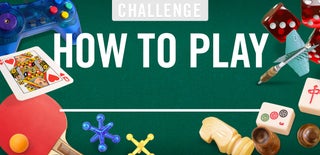Introduction: 3D Printed MiniNes
Watch the video to see the printer and the MiniNes working.
Make your own Mini Nes with 3D printer, Raspberry pi and RetroPie.
Total cost of the project is about 30-40 euros, depending where you buy your parts.
Lets start with the needed parts.
Step 1: Parts
The minimum parts needed for this project is any type raspberry pi, 4 (or more)GB SD card, HDMI cable and a Tv.
Optional parts are the case and a USB extension cable.
You can find the RetroPie image from here: http://blog.petrockblock.com/retropie/
Follow the installation instructions given on the same page.
Step 2: Printing
Total print time was about 2.5 hours for all of the parts together.
The printer is Printrbot simple maker's kit. Plastic used is PLA 1.75mm.
This was my first designed and printed project ever. I used SketchUp to draw the case and imported the pictures as .stl . For the printing and slicing i used Cura 15.02.1. If you want the original SketchUp files, send me a message and i will send them to you.
Step 3: The Case
The print wasn't so successful on the first try. My Z axis was a little too low. Anyway some sandpaper will do the trick.
I made the holes to the case my self with a saw and knife.
Make sure that the USB cable fits on the case.
Step 4: USB Cable and Testing.
I wanted to make a case that has got the display and power ports on the back and the controller ports on the front. Like in the original.
I needed to make a small USB extension cord to get the controller port to the front of the case.
Lastly i used hot glue to keep everything in place.
This is a good time to test the USB port and the RetroPie image workings.
Put the SD card on the Raspberry pie and power it up.
On the first run you will need to configure the raspberry. Pug a USB keyboard to the Raspberry and follow the instructions given in the RetroPie site.
I will not tell you how to add games to the mini Nes. You should own the original game before downloading it in to the emulator. I'm not responsible of your actions.
The RetroPie image is how ever free to use.
Step 5: Case Closed
Heat up your soldering iron to about 210-250 degrees Celsius. This is in the same temperature range that the 3D printer uses. It will melt the plastic nicely. Press the two parts together and start melting them together. This is called plastic soldering.
Step 6: Painting
As you can see. Painting is not really my thing. Well, it's something!
After the horrible paint (i'm sure that your's will look much better :) )
Let it dry.
The paint i used was Revell-Email color. The same kind of paint that is used with scale model's.
Step 7: Game On
Configure the controller to the RetroPie and Game on.
I used the best kind of controller. The original Nes controller, well almost. This is a controller that has got a USB connector.
The raspberry pi works fine with old emulators. Sometimes there is a small lag witch could be the fault of the raspberry or the game image.
If you liked my project, remember to follow me to get the latest projects first!
Thanks for reading.

Runner Up in the
How to Play ____

Third Prize in the
Pi/e Day Contest
















